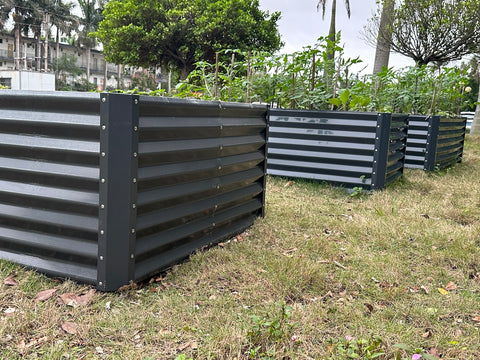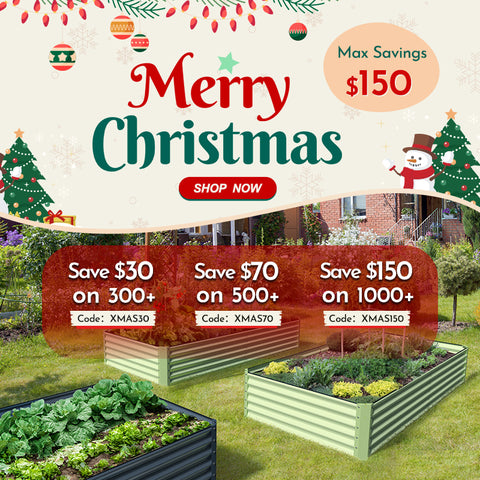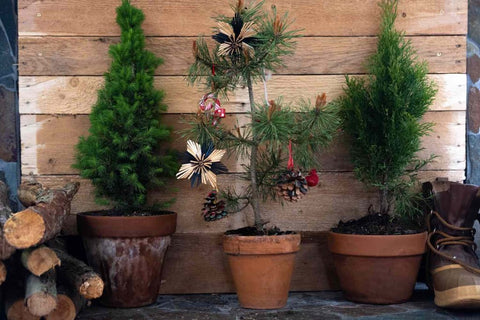The importance of pollinators, especially bees, in our ecosystems cannot be overstated. While outdoor gardens have traditionally been spaces for attracting and supporting these vital insects, the concept of indoor raised bed pollinator gardens is gaining momentum. In this blog, we'll explore the unique and exciting world of cultivating pollinator-friendly plants indoors, creating a blooming paradise that not only benefits bees but also brings a touch of nature inside.The following content also has some reference value for raised garden beds.
The Role of Bees in Indoor Gardens
Bees play a crucial role in pollination, which is vital for the reproduction of many plants, including fruits, vegetables, and flowers. While outdoor gardens naturally attract bees, bringing these pollinators indoors can enhance the success of indoor plants that rely on pollination for fruiting and flowering. Indoor raised bed pollinator gardens offer a solution for those who want to enjoy the benefits of bee pollination while maintaining plants in controlled indoor environments.
Benefits of Indoor Raised Bed Pollinator Gardens

- Year-Round Pollination:
Indoor gardens provide the opportunity for year-round pollination. Unlike outdoor gardens that are subject to seasonal changes, indoor environments offer a stable climate, allowing for a continuous supply of pollinated flowers and fruits throughout the year.
- Controlled Environment:
Indoor gardens provide a controlled environment where factors such as temperature, humidity, and light can be adjusted to suit the needs of both plants and pollinators. This controlled setting promotes optimal conditions for bee activity and plant growth.
- Enhanced Crop Production:
For indoor fruiting plants like tomatoes, peppers, and berries, the presence of bees can significantly enhance crop production. Bees play a crucial role in transferring pollen between flowers, leading to increased fruit sets and better yields.
- Aesthetic Appeal:
Beyond their functional benefits, indoor raised bed pollinator gardens add aesthetic appeal to indoor spaces. The vibrant colors of blooming flowers and the lively presence of bees contribute to a visually stunning and dynamic environment.
- Educational Opportunities:
Indoor pollinator gardens offer educational opportunities for both adults and children. Observing the fascinating behavior of bees up close, learning about pollination, and understanding the symbiotic relationship between plants and pollinators can be enriching and educational.

Creating an Indoor Raised Bed Pollinator Garden
- Choose the Right Plants:
Selecting the right plants is crucial for creating an indoor pollinator-friendly garden. Choose flowering plants that are known to attract bees, such as lavender, borage, mint, and marjoram. Herbs, in particular, are excellent choices for indoor gardens.
- Container Selection:
Opt for raised beds or containers that suit the size and layout of your indoor space. Ensure that containers have proper drainage to prevent waterlogging, and use a high-quality potting mix that provides the necessary nutrients for plant growth.
- Provide Adequate Light:
Bees, like plants, require adequate light for optimal activity. Place your indoor raised bed in a location that receives plenty of natural light. Supplemental lighting, such as grow lights, can be added to ensure that both plants and bees thrive.
- Create a Bee-Friendly Environment:
To attract bees indoors, create an environment that mimics their natural habitat. This includes providing a variety of flowering plants, offering shallow water sources for drinking, and avoiding the use of pesticides that could harm pollinators.
- Introduce Native Bee Species:
Consider introducing native bee species to your indoor garden. While honeybees are commonly associated with pollination, native bees can also play a vital role. Mason bees, for example, are efficient pollinators and can be introduced using specially designed nesting blocks.
- Encourage Pollinator-Friendly Practices:
To make your indoor garden truly pollinator-friendly, embrace practices that encourage bee activity. This includes avoiding the use of harmful pesticides, providing nesting sites for bees, and incorporating a diversity of plant species to cater to different bee preferences.
- Maintain Proper Humidity:
Bees thrive in environments with optimal humidity levels. Indoor spaces, especially during winter when heating systems can dry the air, may have lower humidity. Consider using humidifiers or other methods to maintain the appropriate humidity for both plants and pollinators.
- Regular Monitoring and Maintenance:
Regular monitoring of your indoor raised bed pollinator garden is essential. Check for signs of plant health, ensure that bees are actively visiting flowers, and address any issues promptly. Regular maintenance, such as pruning and deadheading, helps keep the garden in top condition.
- Educational Components:
Enhance the experience of your indoor pollinator garden by incorporating educational components. Informational signs, books about bees and pollination, and hands-on activities can contribute to a richer understanding of the importance of pollinators.

Conclusion
Indoor raised bed pollinator gardens offer a unique and rewarding way to bring the magic of pollination into your home. By creating a bee-friendly environment with carefully chosen plants, proper containers, and thoughtful practices, you can enjoy the benefits of increased pollination and a thriving indoor garden. The sight of bees buzzing among the flowers, the sweet fragrance of blooming herbs, and the enhanced productivity of fruiting plants all contribute to a delightful indoor gardening experience. Embrace the opportunity to create an oasis for both plants and pollinators and let your indoor space bloom with the vibrant energy of a flourishing pollinator garden.









